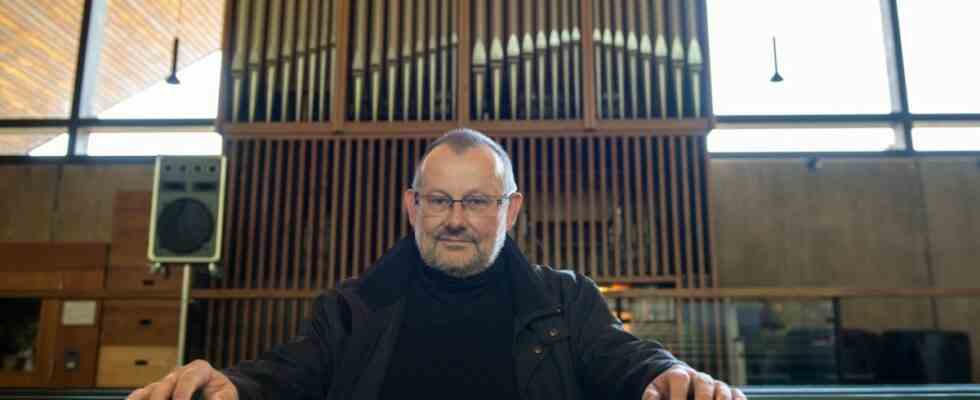Burkhard Kuttig has been a church musician in the parish of St. Stefan in Gräfelfing for 41 years and has been playing the Steinmeyer organ in the parish church for just as long. The organ is now celebrating its 50th anniversary – it was inaugurated on September 24, 1972. Reason enough to ask an experienced organ expert to come to church: on Sunday, September 25, Martin Sander, Professor of Organ at the Munich University of Music and Performing Arts, will be giving an anniversary concert at 5 p.m. In an interview, Burkhard Kuttig explains what makes the organ in St. Stefan special and why it sometimes sounds like it’s in the recording studio.
SZ: Mr. Kuttig, the Steinmeyer organ accompanies you throughout your professional life, nobody knows the instrument better than you. What are we dealing with in this organ?
Burkhard Kuttig: The church was inaugurated in November 1971, and the organ was added in 1972. It is an instrument of the Steinmeyer brothers with about 2100 pipes, a common size for liturgical use. It has 25 registers – a register is always a row of pipes of the same timbre. The organ is divided into four works, each with a keyboard: three for the hands, one for the feet. It is played purely mechanically. The Steinmeyer company was a well-known organ company at the time, and there are also Steinmeyer organs in the Munich churches of St. Luke and St. Markus. Ours in Gräfelfing is the company’s Opus 2262. Through intonation, the timbre of the individual pipes and the sound intensity were precisely adapted to the church interior of St. Stefan.
Burkhard Kuttig has been organist in St. Stefan for 41 years.
(Photo: Catherine Hess)
So an organ ideally suited to the church?
Well, there are a few adversities. Originally the pipes were visible, this was a wish of the church architect. However, the organ stands directly in the window point of the church and is exposed to the sun’s rays. So she kept getting out of tune, especially when there were extreme temperature fluctuations. It wasn’t until 1992 that she finally got a case. It’s been better since then. Unfortunately, the acoustics in the church are generally poor. There is no reverberation. This is due to the ceiling construction, which absorbs the sound. In terms of sound, this is more of a studio atmosphere.
What is special about the organ?
Since it is purely mechanical, it has no game aids. So you can’t preset any register combinations that you could then call up while playing – with very modern organs this can be done at the push of a button. You have to register by hand on our organ while playing, which is very complex. It is best to play works where this is also possible – classical and baroque, for example. Otherwise you need a registrant who takes over the registration during the game.
Which concert can the listeners expect on Sunday?
Professor Martin Sander has only been in Munich since 2021 and has not given that many concerts here yet, so we are particularly pleased that he is coming to us. He begins with a great work by Bach, the grand master of organ music, and plays his Toccata, Adagio and Fugue in C major. Works by Bach’s son Carl-Philipp, Gottfried Homilius, Robert Schumann and August Ritter will also be heard. So Professor Sander spans the arc from Bach to the Romantic period – I will be helpful as a registrant. I’m particularly looking forward to the knight, I don’t know him yet.
What does the future of the organ look like? Does it last another 50 years?
If properly cared for, it will last forever. I will retire in February 2023 and we are still looking for a successor – he can then work to ensure that the church has better acoustics through the renovation of the ceiling. Unfortunately I didn’t succeed.

